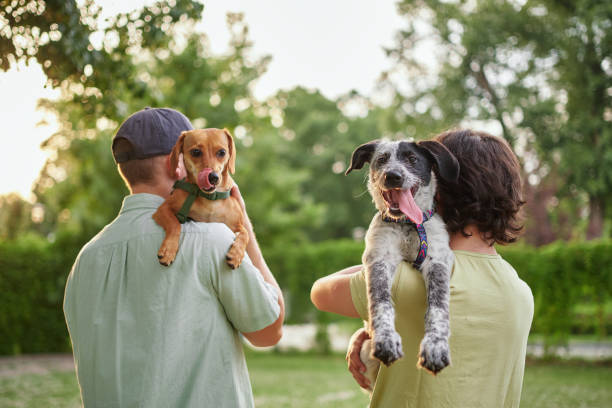What You Need to Know Before Adopting a Rescue Dog
Introduction
Adopting a rescue dog is one of the most rewarding experiences for any animal lover. By providing a loving home to a dog in need, you’re not only changing their life but also gaining a loyal companion. However, adopting a rescue dog comes with unique challenges that require preparation, patience, and care. In this post, we’ll explore key tips to help you get ready for the adoption process, how to care for your rescue dog, and ways to handle common behavioral issues.
Table of Contents
1. Tips Before Adopting a Rescue Dog
Before bringing a rescue dog into your home, it’s essential to be well-prepared. Here are some tips to consider:

Assess Your Lifestyle
- Time Commitment: Make sure you have enough time to dedicate to your new pet. Rescue dogs often need extra care and training, especially if they have experienced trauma.
- Energy Level: Consider the energy level of the dog you’re adopting. Some rescue dogs may need lots of exercise and play, while others may prefer a quieter lifestyle.
- Financial Responsibility: Adopting a dog comes with financial costs, including food, vet bills, grooming, and supplies.
Research the Dog’s Background
- Medical History: Check if the rescue organization can provide information on the dog’s medical history, including vaccinations, health issues, and any special needs.
- Temperament and Behavior: Understand the dog’s temperament and any behavioral issues they may have. Some rescue dogs may be shy, anxious, or have trust issues due to their past experiences.
2. How to Prepare for Caring for a Rescue Dog
Bringing home a rescue dog requires some preparation to ensure their transition into your home is as smooth as possible. Here’s how to get ready:

Create a Safe Space
- Designated Area: Set up a comfortable, quiet area in your home where your dog can retreat to when they feel overwhelmed. This space should include a cozy bed, water, and toys.
- Gradual Introduction: Allow your dog to explore their new environment slowly. Give them time to adjust to new smells, sounds, and people.
Stock Up on Essentials
- Food and Water Bowls: Choose non-slip, easy-to-clean bowls for your new dog.
- Leash, Collar, and ID Tag: Ensure your dog is ready for walks and has identification in case they get lost.
- Comfortable Bed: A soft, supportive bed will help your dog feel at home.
- Toys: Provide toys that are both mentally stimulating and comforting to help reduce anxiety.
Vet Check-Up
- Schedule a Vet Visit: It’s important to take your dog to the vet for a full check-up soon after adoption. This ensures your dog is healthy and up to date on vaccinations.
- Spay/Neuter: Many rescue dogs will already be spayed or neutered, but confirm with the rescue organization if this procedure has been done.
3. Tips for Dealing with Post-Adoption Behavior
Rescue dogs may exhibit a range of behaviors after being adopted, from extreme shyness to excessive energy. Here are some tips to help you manage their behavior:

Be Patient and Understanding
- Adjustment Period: Your rescue dog may take time to adjust to their new environment. This adjustment can take weeks or even months, depending on the dog.
- Set Realistic Expectations: Don’t expect immediate perfection. Rescue dogs may have trust issues or trauma from their previous situations. Give them space and time to feel comfortable.
Focus on Positive Reinforcement
- Reward Good Behavior: Use treats, praise, and affection to reward your dog for positive behaviors. Positive reinforcement encourages good habits and helps build trust.
- Training: If your dog shows signs of behavioral issues, such as barking or anxiety, consider hiring a professional dog trainer. Proper training can help your dog overcome challenges and feel more secure.
Separation Anxiety
- Gradual Alone Time: Rescue dogs, especially those who have been abandoned, may experience separation anxiety. To help ease this, gradually increase the time they spend alone and leave comforting items, like toys or your clothing, for them to feel secure.
Socialization
- Introduce New Situations Slowly: Some rescue dogs may have had limited socialization and could be fearful of other animals or people. Start with slow introductions in a calm, controlled environment.
- Regular Walks and Playtime: Walks and playtime are not only great for physical exercise but also important for mental stimulation and socializing your dog with new sights, sounds, and people.
Conclusion
Adopting a rescue dog is a fulfilling experience that comes with its unique set of challenges. By preparing your home and understanding your new dog’s needs, you can make the transition smooth and rewarding for both of you. Remember, patience and love are key as your rescue dog adapts to their new environment and learns to trust you. With the right care and attention, your rescue dog will become a loyal and loving member of your family.







